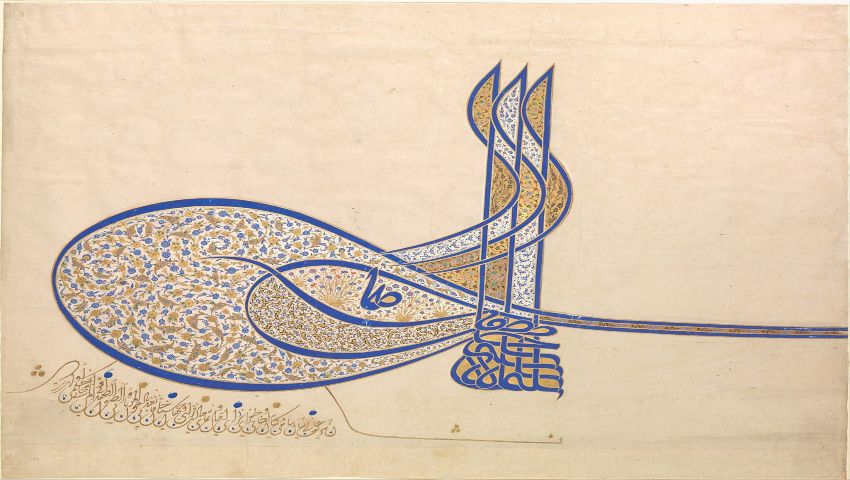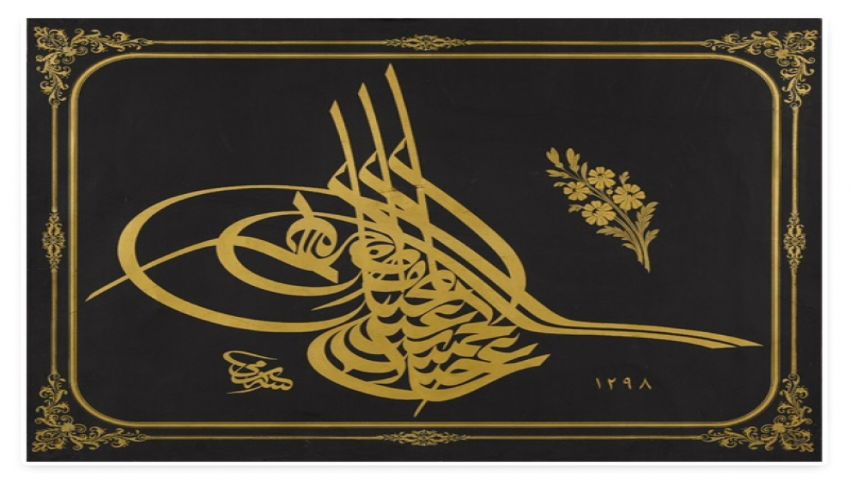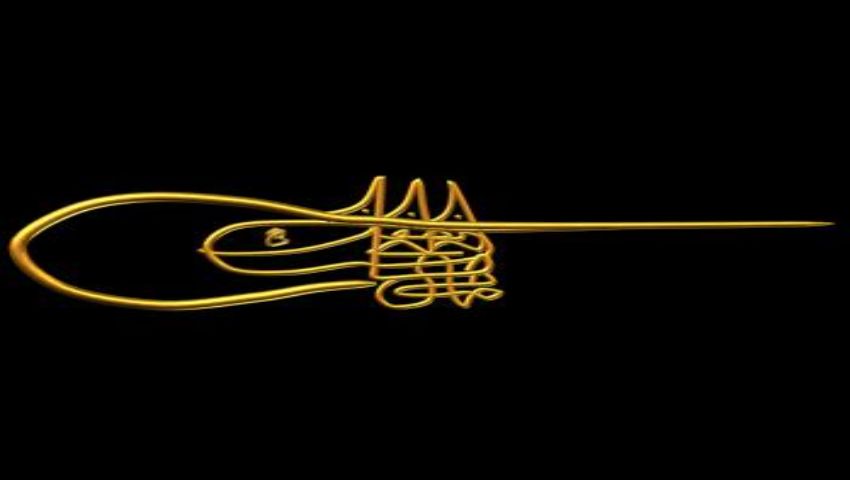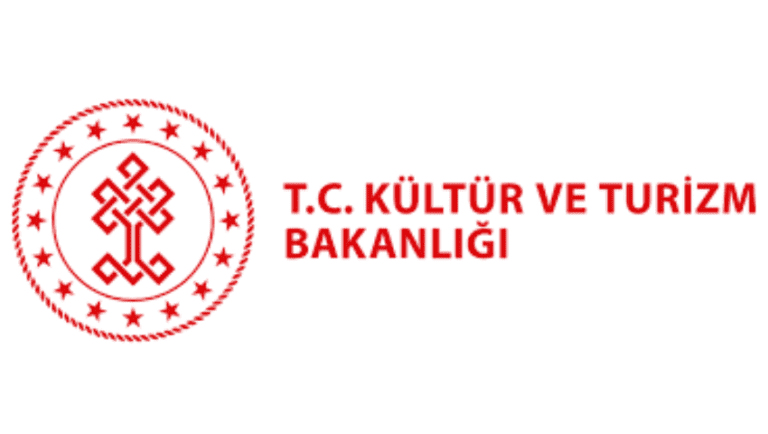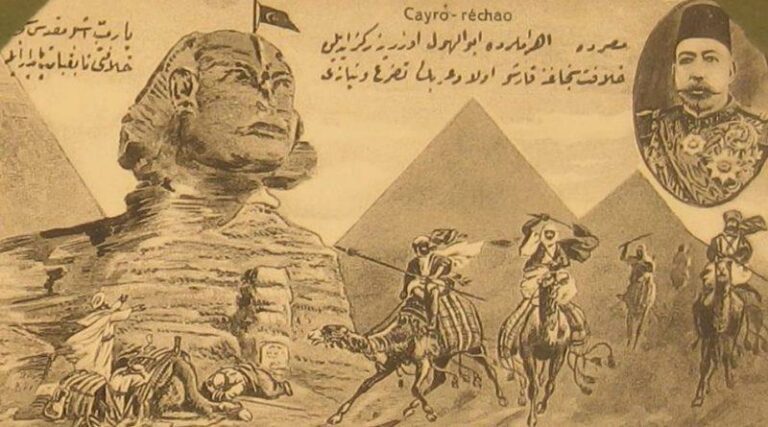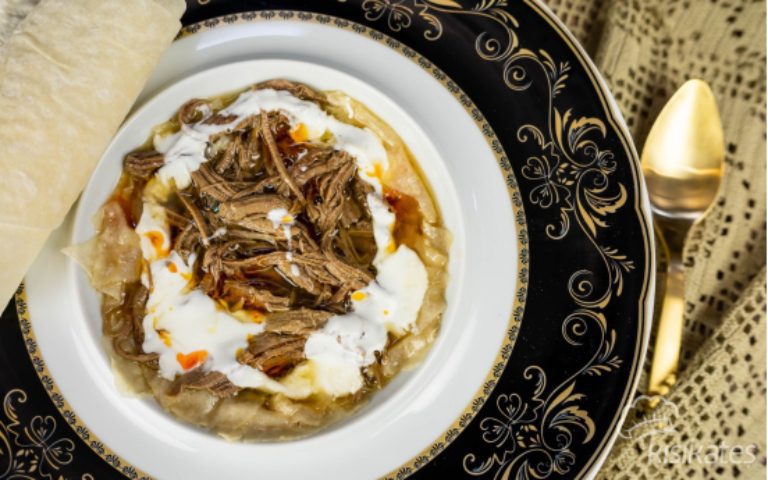Table of Contents
The Tughra is one of the important fonts in which an inscription is written at the top of the Ottoman Sultan’s letters, some in gold, some in beautiful bright colors, and they are written at the top of the books above the basmalah with a thick pen, and its content is the name of the Ottoman Sultan for whom the book was issued, his epithets or titles.
The Tughra is also employed as an Ottoman royal sign, signature, seal, or royal emblem, and it is sometimes drawn on top of royal patents and firmans.
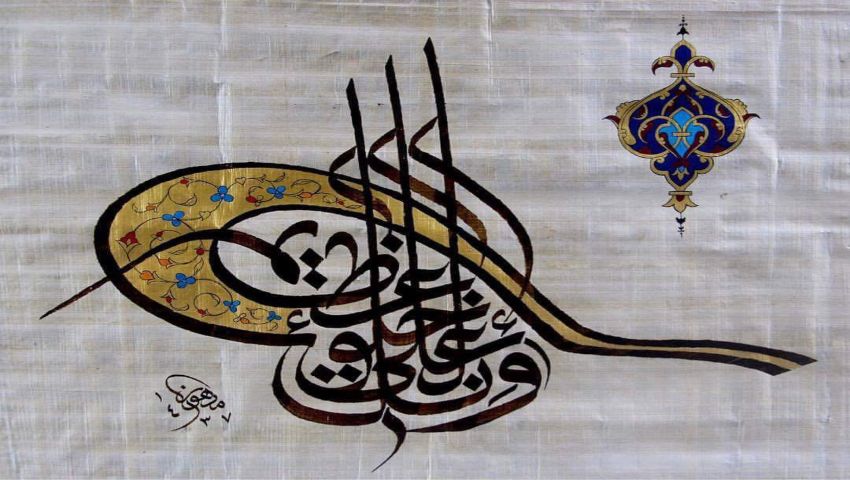
Origin of the word “Tughra”
In his 11th century y Dīwān Luġāt at-Turk (“Collection of the Dialects of the Turks”) , Mahmūd al-Kāschgharī mentions the Oghus term tughragh for the seal (bi) and signature (taw) of the Oghus ruler (malik).
The dropping of the guttural Oghuz ending gh, which is common in Ottoman, explains the form tughra. Mahmud al-Kshghar also understands the verb tughraghlanmak (based on a document it means a Tughraghto get). This corresponds to the Arabic tagh-ghara (“to place a tughra on it”) attested by Muhammad al-Makrizi in 1270.
İt can be assumed that tughra is of Turkish origin, though the primary meaning is unknown.
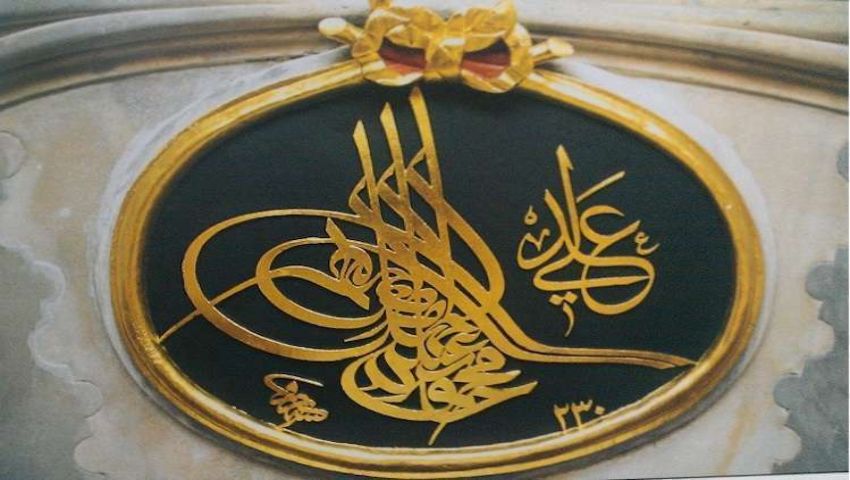
Shape of the Ottoman Tughra
The Ottoman tughra, in its classic form dating from the 16th century, combines the name of the Ottoman ruler and that of his father with titles borrowed from Persian and Mongolian as well as Arabic words and uses Arabic script. Its origins can be traced back to Ottoman and Arabic calligraphy.
A steady progression can be traced from the first preserved, simple Tughra Orhan Ghazi to Suleiman the Magnificent Tughra, The tughras are becoming increasingly text-heavy and elaborate, particularly since Bayezid II.
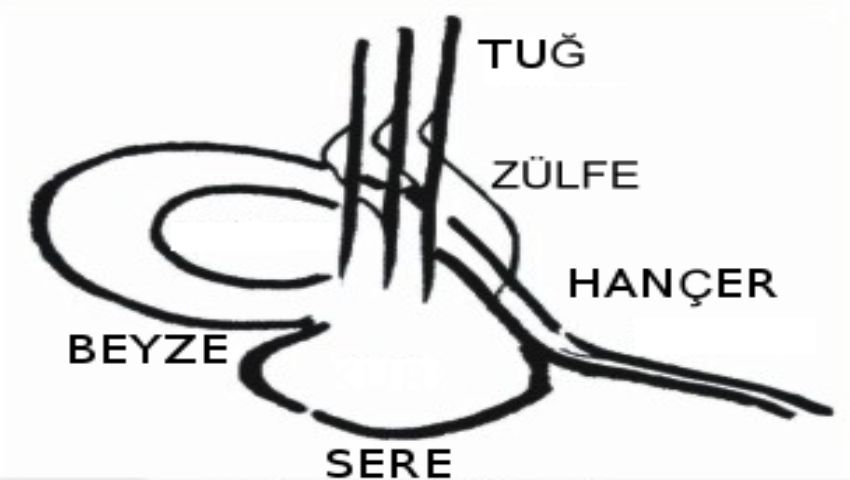
Simultaneously, their size grows, from about 7 cm wide for Orhan Ghazi to about 40 cm wide for Suleiman the Magnificent, corresponding to the width of the records in which they were used.
What they all have in common is that the text’s words are written on top of and within each other using calligraphic criteria.
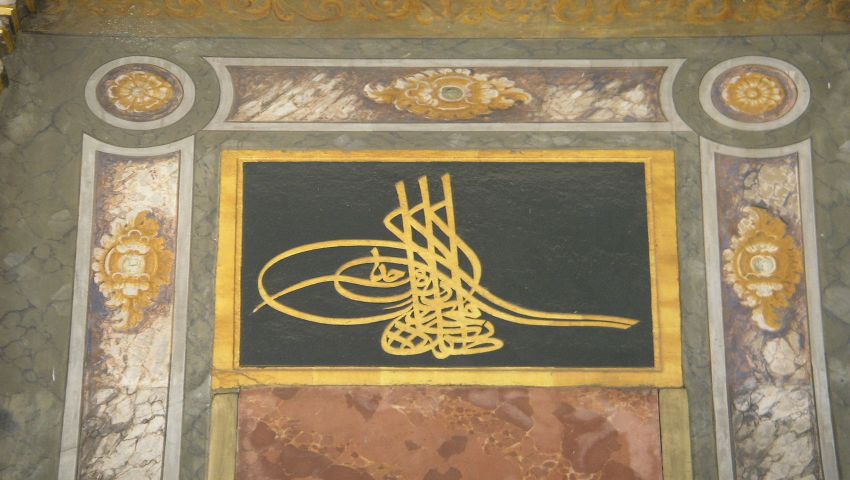
Who painted the Tughra
The respective Nişāncı was responsible for the application of the Tughras , who after the Nişāncı’s rise to head of the imperial chancellery and participant of the Dīwān had to be a scholar, if possible a professor at a medrese, according to a law of Mehmed II.
The Nişāncı usually drew the tughra in his office or in the Dīwān or had them drawn there.
At the instigation of the Sultan, the Nişāncı was also able to add Tughras to empty writing sheets so that decrees that became necessary quickly outside the capital could be dispatched immediately.
A representative of the sultan, for example one of the viziers , was then given the power to draft a decree directly on site and to have it written under the prefabricated tughra.
The same was done when the Sultan was not in Istanbul and decrees were necessary.
Unauthorized writing or painting of the tughra could be punished with death.
Uses of Ottoman Tughra
There were a lot of uses for the Ottoman Tughra such as:
Authenticating documents
The Ottoman tughra’s use is well documented in many preserved documents, in contrast to the use of its possible models, the oghuz and Seljuk tughras and seals (damga), which are only mentioned in a few.
The Ottoman tughra was primarily a stylized hand-held festival of the Ottoman sultans (the official, originally handwritten name).
It served as a seal for imperial letters, granting them legitimacy and certifying them.
The tughras on it were simply executed or written with precious colors, or painted and magnificently illuminated, depending on the sultan’s preference and time, as well as the importance of the occasion and the addressee.
The fact that many tughras’ documents were mostly rolled and sometimes folded and kept in silk bags or caskets accounts for their good state of preservation.
Some of the most ornately illuminated foundation deeds (vakfiye) were safeguarded as collections of pages or bound by hard covers.
Foundations, appointments, promotions, diplomatic embassies, authentications, the transfer of immovable property, the arbitration of disputes, and so on were all occasions for imperial letters.
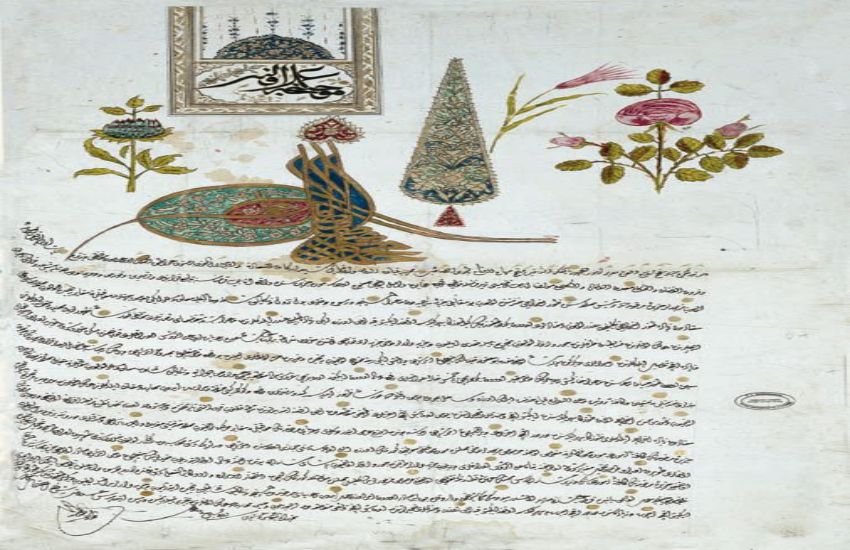
On Buildings and Coins
What is certain is that tughras were used as symbols and decorations on and in buildings, particularly in the 18th century. Sultan Mahmuds II. Tughra, for example, was attached as a sculpture alongside a seal of Suleiman the Magnificent in a prominent location, namely above the mihrab of the Yaschar Mehmed Pasha Mosque in Pristina, which was built in 1834.
Tughras were used on and in buildings as jewelry and as an imperial symbol in the more recent construction phases of Istanbul’s Topkapi Seraglio. A good example is the tughra to the right of the entrance to the “Gate of Bliss” (Bab-ı Saadet), which was redesigned in the Rococo style in the 18th century.
Abdülhamid II. Tughra can be found at the German Fountain in Istanbul, which was built in 1900 by German Emperor Wilhelm II. Medallions depicting Abdülhamid II’s tughra and Wilhelm II’s monogram alternately adorn the interior of the dome above the eight ends of the columns as mosaics.
The earliest known Ottoman coins with tughra are from Murad I and Emir Süleyman, who were proclaimed in Adrian Opel Sultan and 1410 strangled on behalf of his brother Musa during the interregnum (1402 to 1413).
Following him, other sultans had coins minted with their tughras on a regular basis, beginning with Mehmed II and increasing in frequency with Suleyman II.
Around 1700, a type of Ottoman gold ducat was even referred to as “Tughrali.”
Even if a coin no longer bears a tughra, the obverse (the head) is referred to as “tura” in modern Turkish.
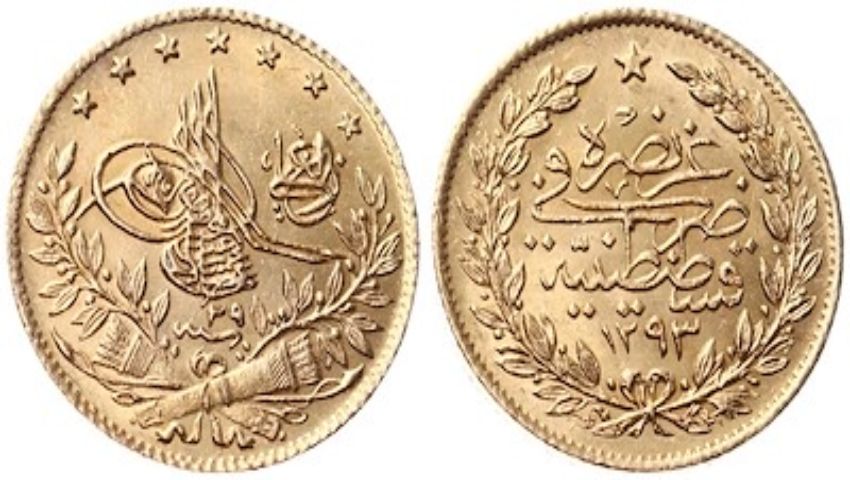
Over the centuries, the tughra of the respective ruling sultan was provided with an abundance of official, semi-official, and private items, such as gravestones, medals, flags, postage stamps, weapons, saddlecloths, and utensils from the Sultan’s household.
Banning the Ottoman Tughra
Law No. 1057, put into effect in the middle of 1927, mandated the removal of Tughras as well as Ottoman coats of arms and inscriptions from state and public buildings throughout the Republic of Turkey.
Tughras from state and municipal structures had to be housed in museums. If the artistic value of the tughras is jeopardized during dismantling, the tughras should be covered on the spot. The Ministry of Culture had the authority to make decisions regarding the relevant procedure. This law was specifically aimed at removing tughras from public view that had previously been installed to represent Ottoman rule.

Tughra of Suleiman the magnificent 
Tughra of Sultan Abdul Hamid ii 
Tughra of Sultan Mehmet Fatih

